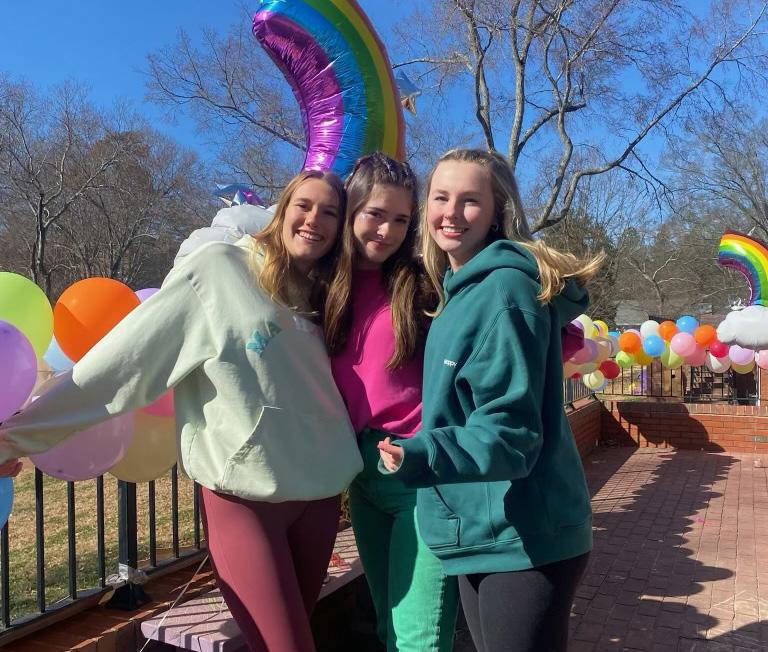
3 minute read
Davidson Plans Monument to Enslaved Individuals Monument Design to be Unveiled at President Hicks’ Inaguration
MADELINE RICHARD ‘26 (SHE/HER)
Over the past several years, Davidson has been working to address its ties to slavery and move toward racial equity. This mission inspired a monument acknowledging the contributions of enslaved individuals. In 2017, then-president Carol Quillen began the Commission on Race and Slavery, which examined the college’s complex past and provided guidance for greater justice. The commission hopes to honor the enslaved individuals who built and maintained Davidson’s campus, and they believe that the monument will help them accomplish their goal. While the monument will not be completed until 2025, it will be formally announced at President Doug Hicks’ ‘90 upcoming inauguration. The monument’s artist will also be revealed at Hicks’ inauguration.
Advertisement
The project has been led by the Special Committee on Commemoration (SCC), a group of faculty members, alumni, and trustees; however, members of the committee also emphasized their commitment to honoring Black individuals and the Davidson community throughout the planning process. For instance, the committee searched for Black artists to design the monument. The committee also met with Black students, Black alumni, and representatives from Black churches in Davidson. As Professor Cort Savage, the Chair of the Art Department and a consulting faculty member of the SCC, explained, the committee was dedicated to “keeping critical voices in the conversation.”
Lia Newman, director and curator of the Van Every/Smith Galleries and a consulting member of the SCC, had similar comments. “We sought a lot of input and advice from others, specifically community members whose families were impacted by the college’s past actions,” Newman said over email.
Much of Davidson’s campus was built and maintained by enslaved people, and the monument is meant to address this history and honor their legacy.
“One of our goals with this memorial project is to hold on to those individuals who played a large role in the creation of the campus but weren’t recognized,” Savage said. “It’s to acknowledge our institution’s past connections to enslavement.”
Savage also emphasized the monument’s gravity—since the memorial reflects such important work, “we couldn’t possibly give it too much real estate.”
However, Savage emphasized the optimism woven within the monument. He commented that the committee “wanted something that would be forward-looking and positive” about the progress that the college has made. He also hoped that the monument would “build a stronger relationship with the Black community in Davidson because many of those people are family members.”
Similarly, Hilary Green, Professor of Africana Studies and another consulting faculty member of the SCC, views the monument as an opportunity for recovery.
“I see the installation as doing some of the healing work that needs to be done within the college community, as well as the wider Black community,” Green said.
Green also believes that the monument will encourage other smaller colleges to acknowledge their ties to enslavement. As she explained, many large universities, like the University of Virginia, have publicly addressed their pasts; however, most smaller schools have failed to do so.
“It tends to be the big institutions who’ve been doing this work and there are very few small liberal arts colleges like Davidson that have done it,” Green said. “[Davidson’s monument] will be part of a growing conversation [about] how campuses can use their history to create art for [social justice] purposes.”
Green intends for the monument to encourage students to reflect on internalized narratives and systemic racism.
“[The memorial will inspire students to examine] what memory and history silence, what history is hidden in plain sight, and how those suppressed histories allow for certain myths to persist,” Green said. “It will be a site of reflection, a site of contemplation, but also a site for students to realize that [a racist] system is here too.”
Virgil Fludd ‘80, a member of the Board of Trustees and the Chair of the Special Committee on Commemoration, wants the Davidson community to use the monument as a space for contemplation. He believes that the monument will act as a “catalyst for ongoing dialogue about race relations,” an important step towards justice.
While Green, Fludd, Newman, and Savage believe that the monument is a positive step, they also feel that the Davidson community must keep acknowledging its problematic history and questioning dominant narratives. “Visual acknowledgment or commemoration is just one part of reckoning with our past,” Newman commented.






